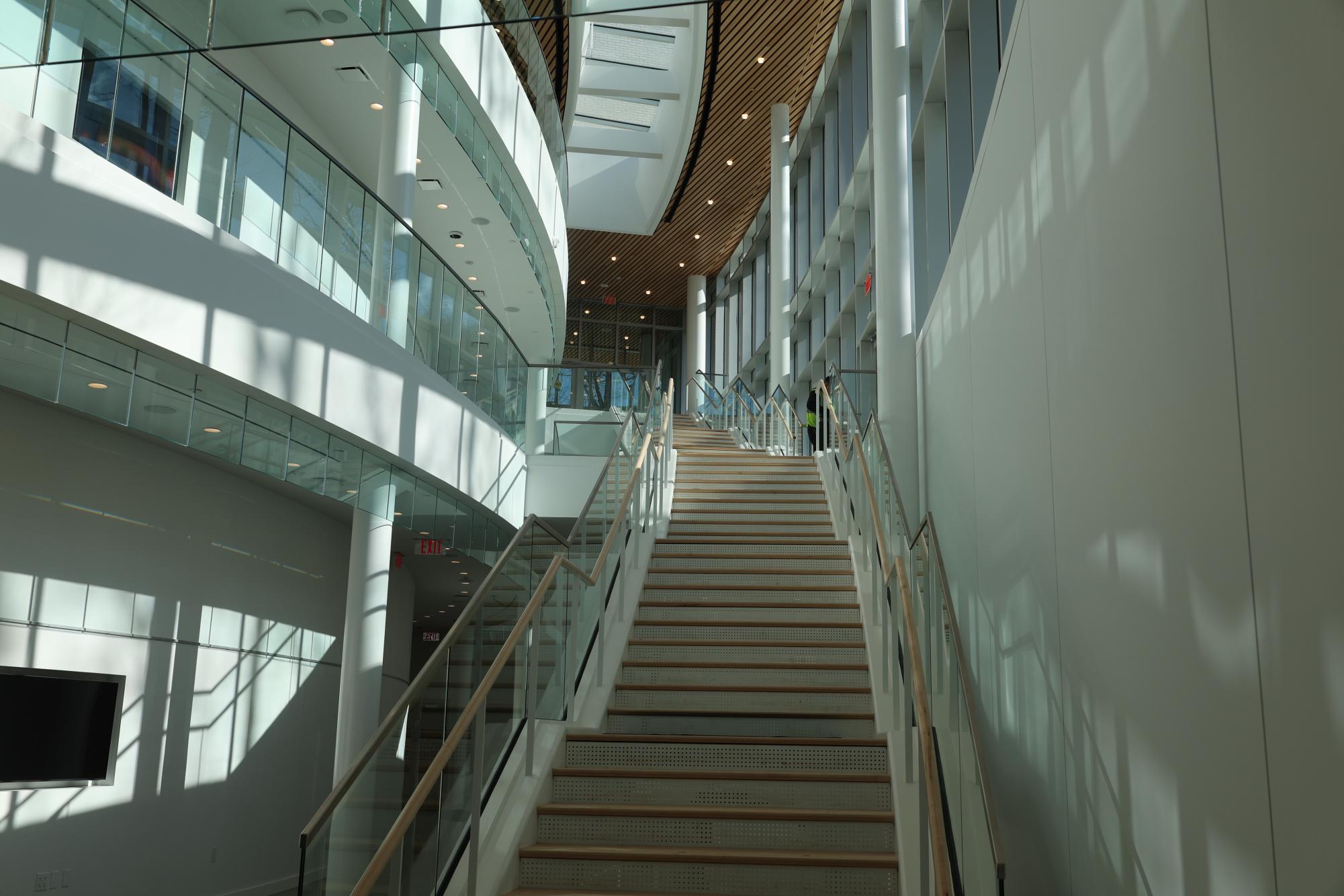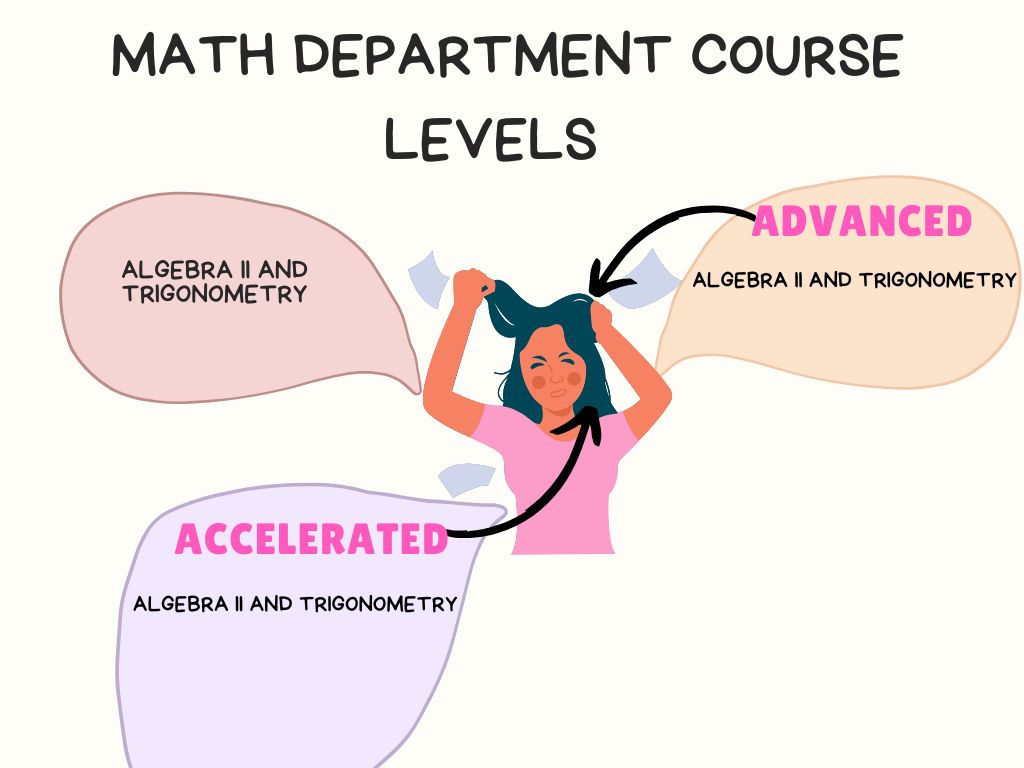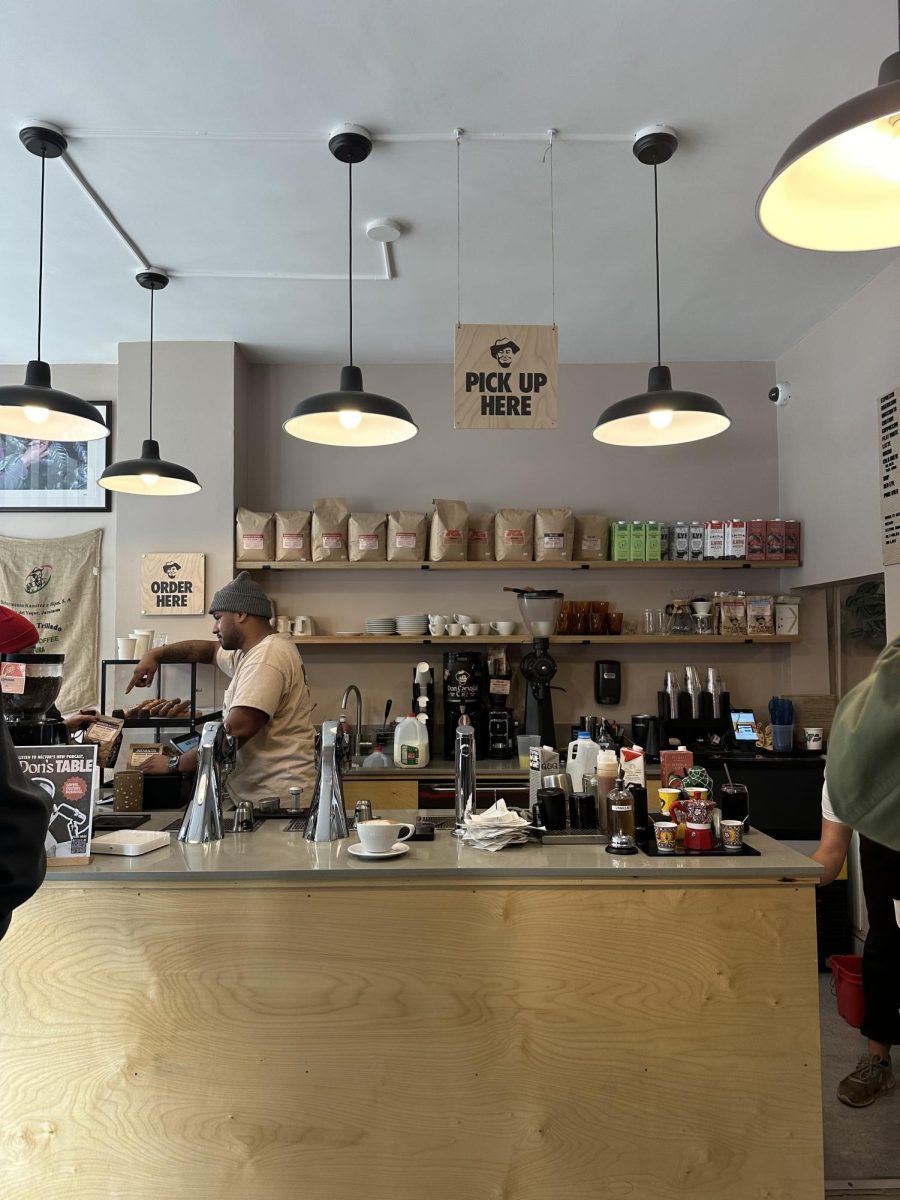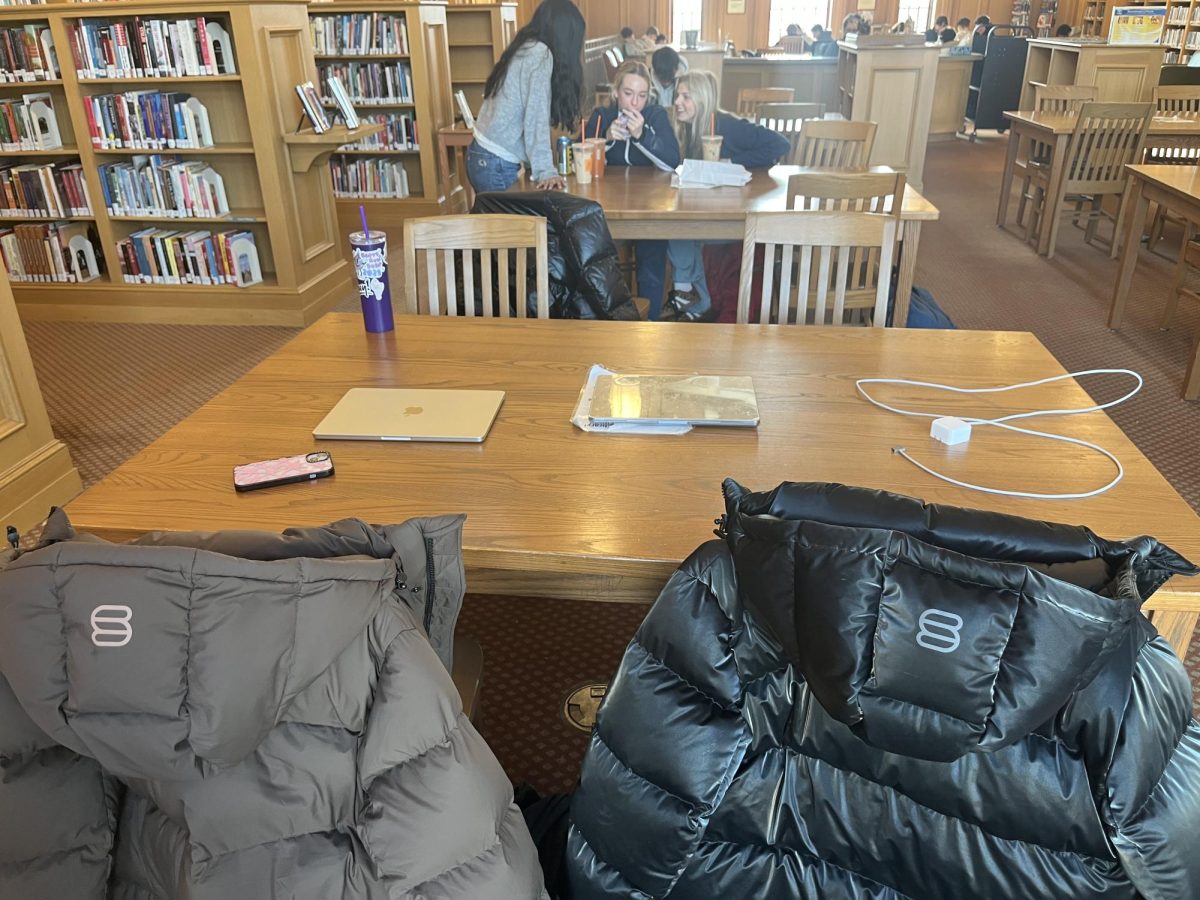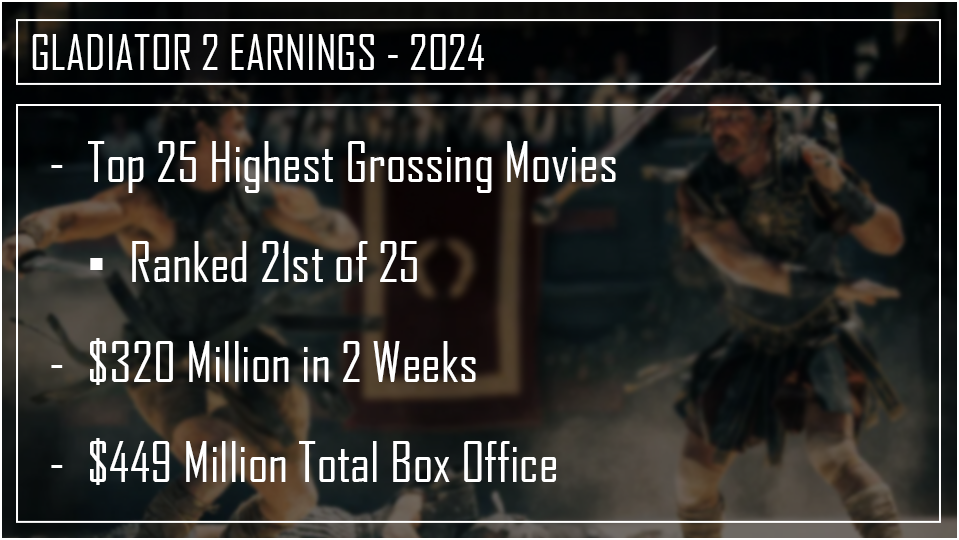When prospective students visit Hackley for the first time, they are amazed by the beautiful scenery of the campus and the large size. However, Hackley is filled with tons of stairs, making getting from one place to another a long commute. With sports being a major part of the life of a Hackley student, athletes are often injured and have to navigate the many stairs while on crutches.
The average Hackley Upper School student’s weekly schedule includes two trips to the Center for Creative Arts and Technology and five trips to the Walter C. Johnson Center for Health and Wellness. To get to both of these buildings, students encounter a long path of stairs.
Sophomore Daisy Roesser sprained her ankle last year in a lacrosse game against Poly Prep. Due to pre-existing trouble in that same ankle, the injury required surgery after many rounds of physical therapy. Ten months after the injury, Daisy is still in a boot, making it extremely difficult to get around campus.
“Being on crutches is already hard, but having to constantly go in and out of different buildings and up and down stairs to get from one class to another makes it so much harder,” said Daisy.
Not only is navigating the campus on crutches difficult, but the classrooms are definitely not built for someone in a wheelchair full-time. The small humanities classrooms with big harkness tables make it impossible for students in wheelchairs to get around.
The phrase “Enter here to be and find a friend” is common to all Hackley students. Engraved on the entrance to the Upper School, this motto is something adopted by all students and shows the importance of inclusivity here. Yet, the design of the campus doesn’t always make that possible.
Although the current administration’s goal is to embody these values, they are faced with the problem that back in 1880, when most of Upper School was built, there wasn’t the same understanding of creating a campus accessible to everyone.
The newest buildings built on campus, however, include elevators and ramps, so they are up to standards with state requirements and can provide easy access to those who need it. If you look in front of the CCAT, the entrance is created in such a way that someone in a wheelchair could get out of a car and enter the building without having to maneuver around any steps or a curb. All of the entrance doors in the building, as well as bathrooms and a few other rooms, have automatic doors, allowing people in wheelchairs to get around the building alone.
There are no students currently in wheelchairs in the upper school. But Head of School Charles Franklin said, “Knowing Mr. King, Mr. Aldrich, and Mrs. Jean, if a student applied and came and we wanted them as part of the community, we would do as much as we could to make sure that we had a facility that allowed them to be here.”
In his first year on campus, Mr. Franklin had his own problems getting around the campus. His youngest daughter, Charlie Franklin injured her knee and was in a wheelchair for a while. He and his wife created a path that allowed them to get their daughter from his home, Gage House, to the lower school. They went across the quad into the cafeteria and grabbed breakfast. Then, they used the freight elevator outside the lunchroom and took the middle school elevator down to Saperstein Arch where they then finally rolled her up to the lower school. While not impossible, the long commute through the entire campus was not ideal.
However, despite all the troubles he faced, Mr. Franklin said, “The lower school teachers and staff were incredible. They got her a different desk so she would be able to keep her foot up. When I see when the other kids get injured, buildings and grounds come in and fix the classroom set up allowing for students to continue to come to school.”
Hackley doesn’t have an official Americans with Disabilities (ADA) office, but they are still required to provide both students and faculty with ADA accommodations. As a student, if you want to request certain accommodations, whether that be rides around campus or classroom location changes, the process is to first meet with your division director, and discuss the changes you need to make. Then it would be passed on to Robert Aldrich, Director of Operations and Campus Planning. His job is to then execute the plan, whether that be arranging rides with Buildings and Grounds or shifting classroom locations.
The process for faculty is different, if they wanted to request an accommodation they would visit the director of human resources and finance office. Then, that request whether it be for a standing desk or an adjustment to their classroom would be given to Mr. Aldrich who would carry out that request.
The only building on campus that is wheelchair inaccessible is Raymond, the oldest building on campus. , “It’s the last building we haven’t yet renovated”, said Mr. Aldrich, “It’s just a matter of time and it’s not as inexpensive as people think, to renovate this building is probably thirty to forty million dollars.” Even though this building is a big part of high school, and some middle school students’ days, when you look at it in terms of total square footage, it’s a very small percentage.
The Goodhue building has an elevator and ramp leading up to it, making it up to code and accessible for a student in a wheelchair.
Even though many people will view this campus as inaccessible, the more modern buildings include special features making them both accessible but also enjoyable for students and faculty. The new CCAT is equipped with many different features, making it more inclusive. All bathroom doors have a wave-to-open function on both the inside and outside. As well as elevators throughout the building, not just in one place. Both Diller Hall and the black box theater are equipped with ADA-assisted listening devices. People with a hearing impairment can go to the control room and get a headset that picks up whatever is being said in the microphone and makes it so that it can be heard in any part of the theater in a way that meets the volume needs of the person.
“There’s no denying it would be a hard campus to get around in a wheelchair,” said Mr. Franklin, “And that’s something that I think we have to be cognizant of. We absolutely are gonna have visitors on those days who are in wheelchairs or walkers and need help with mobility. And so, it is something that we think about for those large events and any of our new construction.”
Although at first glance the Hackley seems inaccessible, there are so many little things that are added to the campus, targeted to make each student’s day just a little bit easier. With a few changes, anyone who wanted could attend here.


